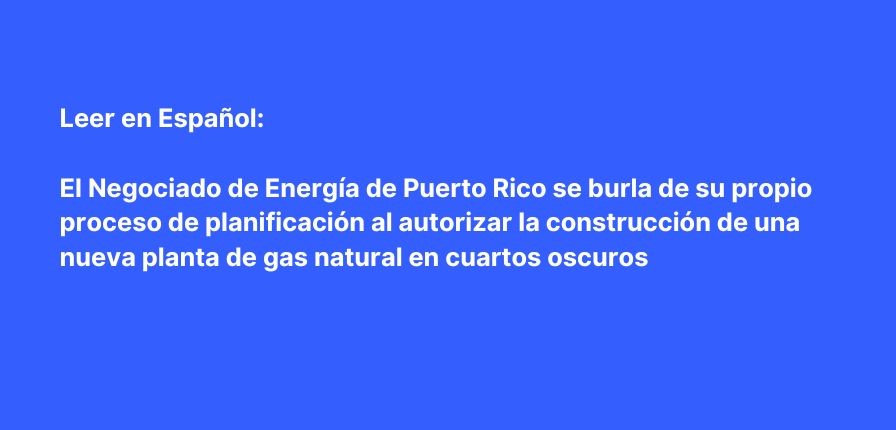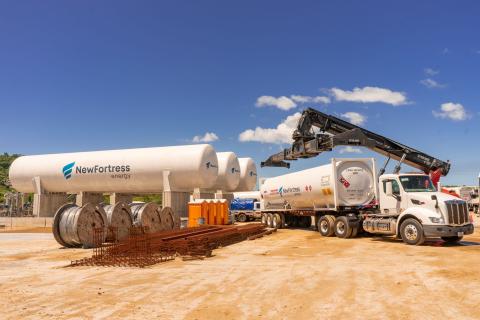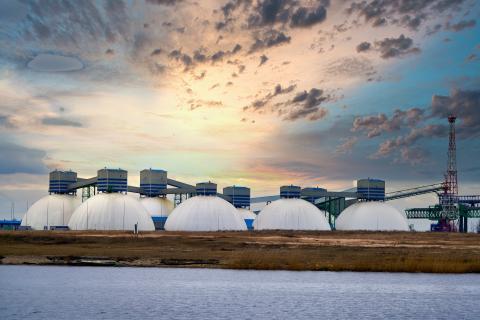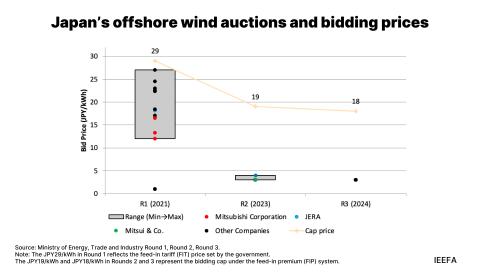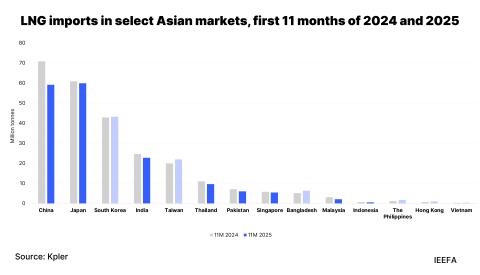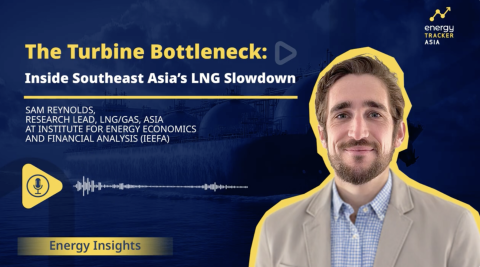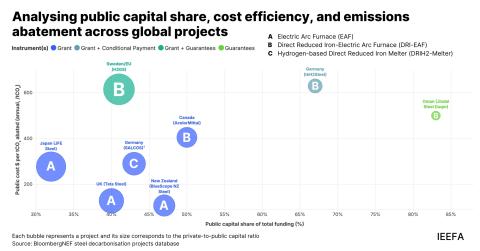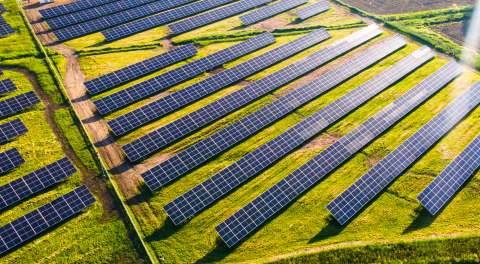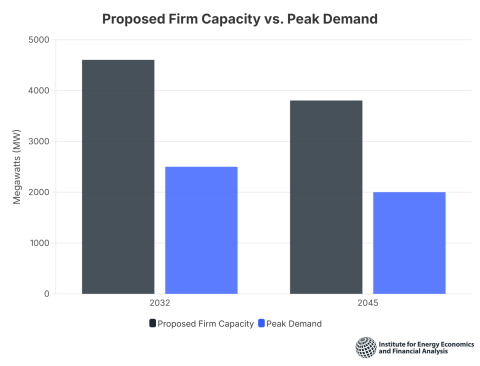Puerto Rico Energy Bureau makes a mockery of its own planning process to secretly approve new natural gas plant
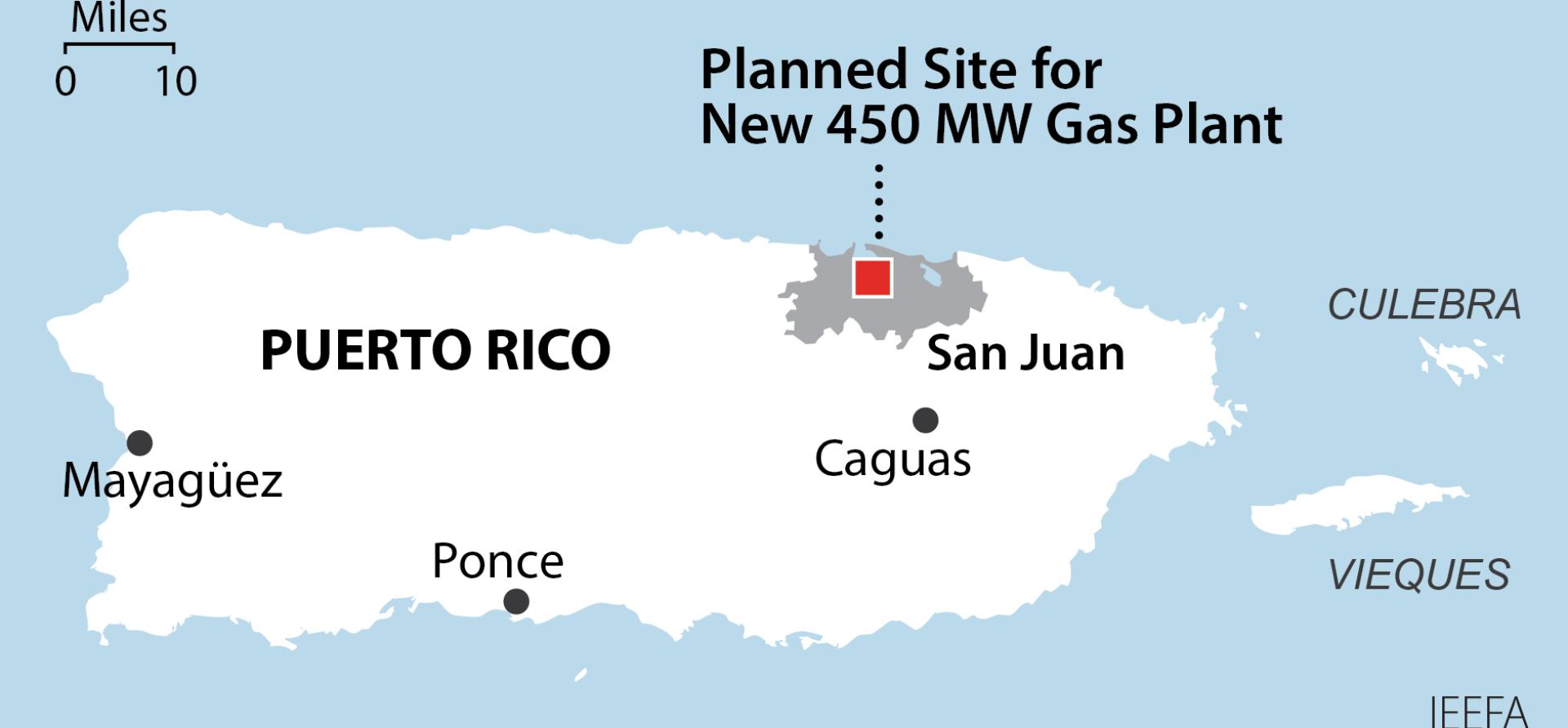
Key Findings
The Puerto Rico Energy Bureau’s approval of a new natural gas plant contract is a major step backward.
The contract approved by the bureau would create a 450-megawatt facility, 50% larger than its original plan.
The deal will lock Puerto Rico into decades of natural gas use because of a toothless provision for green hydrogen.
Puerto Rico’s long-promised transition to renewable energy sources will be set back because of the deal.
The Puerto Rico Energy Bureau’s approval of a new natural gas plant contract represents a major step backward for the island’s renewable energy transition and for sound energy planning in Puerto Rico.
The Puerto Rico Public-Private Partnership (P3) Authority announced a 30-year contract on Dec. 20 for the construction and operation of a new natural gas combined cycle power plant that will allegedly convert to 100% green hydrogen by 2050. The plant will be owned and operated by a consortium of Tropigas and Cratos Energy Holdings, and New Fortress Energy will supply the gas. The plant is to be located near the existing San Juan power plant and New Fortress Energy LNG import terminal.
Although the procurement process had called for a 300-megawatt (MW) facility, the contract is for a 450-MW facility, 50% larger. The Puerto Rico Energy Bureau has approved the contract, but its approval document is not publicly available.
The construction of this plant will lock Puerto Rico into decades of natural gas use, despite the rhetoric around a conversion to green hydrogen. The contract itself simply specifies that the plant must initially be “capable” of blending as much as 30% hydrogen. It then states that the parties to the contract can decide to meet and discuss “whether the Green Hydrogen Fuel Implementation is technically and financially feasible” and, if so, proceed with it. There is no timeline attached to the use of hydrogen at the plant and no penalty if hydrogen is never used.
An August 2024 IEEFA report found that assertions of “hydrogen-capable” natural gas plants amount to “little more than marketing designed to obscure the myriad shortcomings and unanswered questions” associated with the technology. Among these are the high cost and logistics of transporting hydrogen, as well as the need for major capital investments needed to achieve high penetrations of hydrogen in the fuel mix.
Operating a power plant by burning green hydrogen—with the fuel produced by using renewable energy to separate water into hydrogen and oxygen—is one of its least efficient or useful applications. Indeed, this was one of the findings of a 2023 energy bureau-commissioned study that did not even consider using green hydrogen for power generation as among the 16 possible uses it evaluated for hydrogen in Puerto Rico. It is far more efficient to use renewable energy directly to generate power than to use renewable energy to make hydrogen, then burn the hydrogen to generate power. More appropriate uses of green hydrogen are in applications that do not have other readily available low-carbon alternatives, such as aviation and shipping fuel, fertilizer production, steel production, or long-duration energy storage.
All of these questions surrounding the technical and economic viability of converting this plant to hydrogen undoubtedly would have been raised if there had been any sort of public process before the contract was awarded
Instead, the energy bureau decided to subvert its own planning process to approve the plant. In its August 2020 order approving a 20-year integrated resource plan (IRP) for the Puerto Rico Electric Power Authority, the bureau authorized PREPA to spend “up to $5 million” for preliminary analysis of a new natural gas plant at the Palo Seco site in the San Juan metro area.
The bureau ordered the P3 Authority in 2022 to begin the procurement process for a 300-MW natural gas plant, which resulted in the current contract for a 450-MW plant, which the bureau has approved. The plant is now included as a “fixed decision” in the draft 2025 IRP currently before the bureau.
Once again, sound energy planning is taking a backseat to politically-driven contracting in Puerto Rico, despite the rhetoric of how privatization and the imposition of an independent regulator (the bureau) were going to depoliticize Puerto Rico’s energy system. Construction of this plant will lock Puerto Rico into decades of further natural gas dependence, crowding out the island’s long-promised transition to 100% renewable energy.

